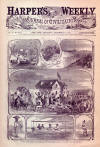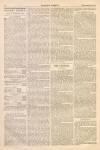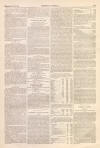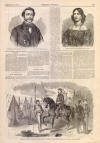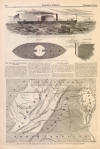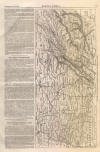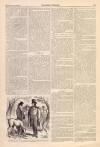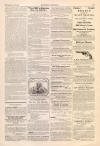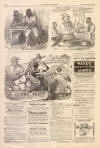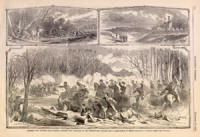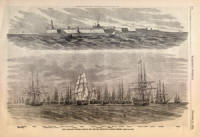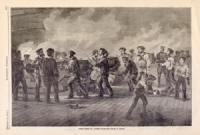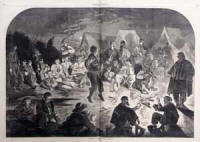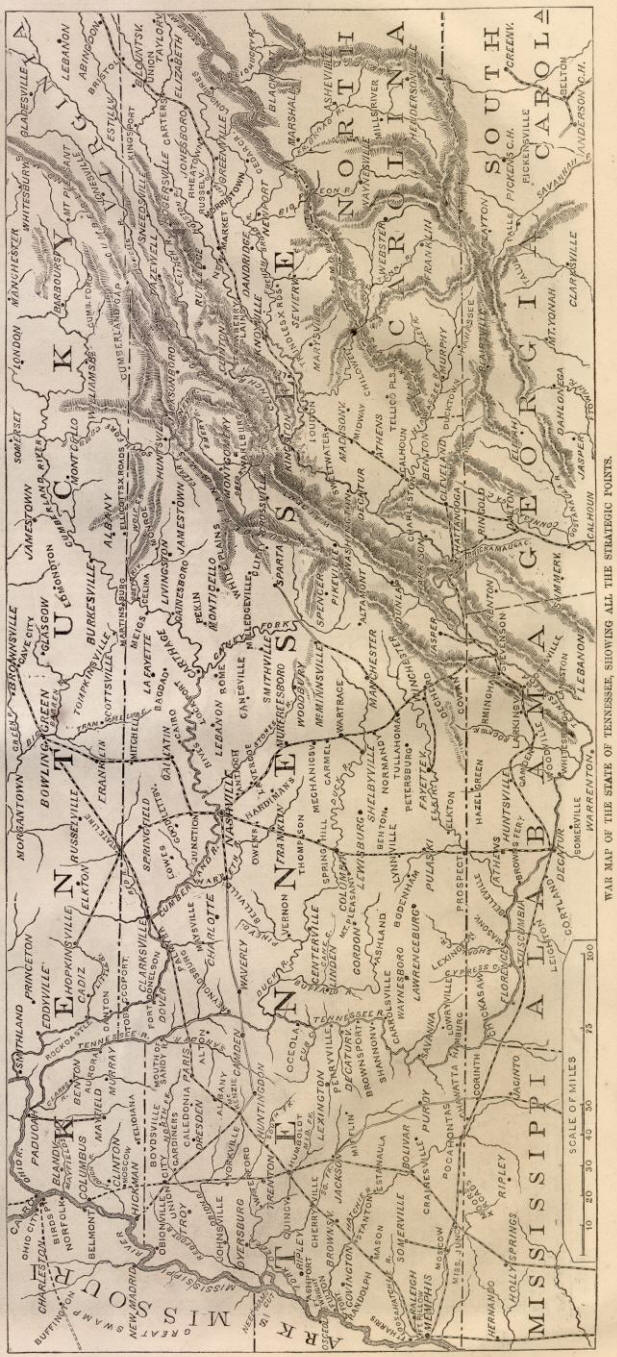Tennessee Map
|
|
This Site:
|
DECEMBER 21, 1861.] HARPER'S WEEKLY. 807 (Previous Page) that portion of the peninsula between the waters of the Chesapeake and the Atlantic, now jointly held by Maryland and Virginia, could be incorporated into the State of Delaware. A reference to the map will show that these are great natural boundaries, which, for all time to come, would serve to mark the limits of these States. To make the protection of the capital complete, in consideration of the large accession of territory which Maryland would receive under the arrangement proposed, it would be necessary that the State should consent to modify her Constitution as to limit the basis of her representation to her white population. In this connection, it would be the part of wisdom to reannex to the District of Columbia that portion of its original limits which by act of Congress was retroceded to the State of Virginia. This arrangement would reduce the size of the State of Virginia at least one-half, leaving the name of Virginia to that part only which is now mainly loyal. The disloyal section, comprising all the great cities of Virginia—Richmond, Norfolk, Fredericksburg, Lynchburg, etc.—and all the sea-coast, would be annexed to Maryland, while Delaware would rise, by spreading over the whole peninsula between the Chesapeake and the ocean, to be a State of considerable magnitude. Under this reconstruction Maryland would become one of the three great States of the Union. We need hardly direct attention to the clause in the Secretary's report which hints that emancipation in Maryland must be the price paid for this acquisition of territory. On this page we give a full and elaborate map of Tennessee, which, from all appearances, is destined to be the seat of war in the West. Our map shows the railway bridges broken in Eastern Tennessee by the Union men ; the city of Nashville, which, according to some authorities, is destined to be the rebel capital; the city of Memphis, near which, in all probability, the bloodiest battle of the war will be fought ; and all other sites and places of interest in the State. Our artist writes as follows of this map : The bridges burned by the Union men of Eastern Tennessee were two bridges over Chicamanga Creek below Chattanooga, one fine bridge on the Eastern Tennessee and Georgia Railroad, over the Hiwassee River at Charleston, Tennessee ; also two bridges on the Eastern Tennessee and Virginia Railroad, one of which over the Holston River at Union, near the Virginia line, was destroyed, the other, over Lick Creek, between Russellville and Greenville, was but partially burned and has been repaired. A railroad bridge over the Tennessee River in the western part of the State has recently been completed, and there is now uninterrupted railroad communication between Nashville and the Mississippi River at Columbus and Memphis. Morristown, where the reported victory of Parson Brownlow occurred, is on the Eastern Tennessee and Virginia Railroad. There is another place of this name, simply a post-office in Granger County, about 15 miles north of the railroad. OUR ARMY AT WASHINGTON.Oust attentive Washington correspondent has sent us the sketches which we reproduce on page 804. One of them represents the OBSERVATORY AND EARTHWORK ON UPTON'S HILL; another, an "AFFAIR OF PICKETS" on the road to Fairfax Court House, over the abattis placed in the road by the rebels ; and a third, the late CAVALRY SKIRMISH near Vienna. The following account of the cavalry skirmish near Vienna, from the Washington Star, will serve to explain the illustration : The reconnoissance made yesterday by a squadron of the Third Pennsylvania regiment, consisting of companies F and N, under command of Captain Bell, in the neighborhood of Vienna, resulted disastrously to our forces. After reaching Vienna they took the right-hand road toward Hunter's Mill, and had gone about a mile and a half when they suddenly found themselves hemmed in on three sides by not only a superior force of cavalry, but also of infantry. The discharges of the rebel musketry placed the horses of our cavalry beyond the control of their riders, the animals having been but recently brought into service, and therefore unaccustomed to such alarms. The officers, after several ineffectual attempts to get their men in line for the purpose of making a charge, ordered a retreat, which was effected in as good order as the peculiar circumstances permitted. The skirmish was brisk, though of short duration, the rebel cavalry firing buckshot from their carbines. The number of rebels killed and wounded is not known. John Beatty, private in Company N, killed a rebel officer and captured his horse. The mark on the saddle was D. S. Davis, Ridgeway, North Carolina. Better fortune attended our arms on the occasion of Colonel Bayard's cavalry reconnoissance near Dranesville. The Colonel himself tells the story so briefly that we give his report in full : CAMP PIERPONT, VIRGINIA, Nov. 27, 1861.SIR,—In obedience to orders, I started from this camp yesterday with my regiment at nine o'clock in the evening, for the purpose of marching on Dranesville. We reached positions above and behind Dranesville shortly after five in the morning, after a very tedious and toilsome march. Major Barrows advanced on the town by the northern pike which leads to it with two companies of the regiment, while I with the other eight gained the rear of the town, and advanced by the Leesburg pike. There were but two picketmen in the town. These were cavalrymen belonging to Colonel J. E. B. Stuart's regiment of Virginia horse, and were captured, with their horses and arms, by Captain Stadelman's Company B. I arrested six of the citizens of Dranesville, who are known to be secessionists of the bitterest stamp. The names of the citizens taken are as follows : John F. Day, M.D., of Dranesville ; R, H. Gannell, of Great Falls, Virginia ; John T. D. Bue and C. W. Coleman, of Dranesville; W. B. Day, M.D., of Dranesville; and J. B. Fair. Upon my return, some miles from Dranesville, a fire was opened upon the head of the column from a thick pine wood. Assistant-Surgeon Alexander was seriously wounded, and private Joel Houghteling was badly wounded, and I had my horse killed. The wood was instantly surrounded, and the carbineers sent into the woods. We killed two and captured four, one of whom we shot twice, and is not likely to live. I captured two good horses, five shot-guns, one Hall's rifle, and two pistols. The names of the prisoners are as follows : W. D. Farley, First Lieutenant South Carolina Volunteers (was Captain on General Bonham's staff); F. De Carandene, Lieutenant Seventh South Carolina Volunteers ; P. W. Casper, Seventh South Carolina Volunteers; Thomas Coleman, citizen of Dranesville (dangerously wounded); F. Hildebrand, private Thirtieth Virginia cavalry; A. M. Whitten, private Thirtieth Virginia cavalry (taken at Dranesville on picket). We killed or captured all we saw. I can not close this report without speaking of the splendid manner in which both men and officers behaved. The fine manner in which Majors Jones and Bayard, and the Second Lieutenant of the Fifth cavalry, Mr. Barrows, acted, can not be too highly commended or appreciated. All acted well, and I can not but thus publicly express my admiration for their truly admirable behavior. I am, Sir, very respectfully, your obedient servant, GEO. D. BAYARD, Colonel First Pennsylvania Cavalry. MAJOR-GENERAL McCALL, Commanding Division, etc.
THE COMBINED EUROPEAN FLEET
|
||||||||||||||||||||||||||
|
|
||
|
|
Site Copyright 2003-2018 Son of the South. For Questions or comments about this collection, contact: paul@sonofthesouth.net |
|
|
Are you Scared and Confused? Read My Snake Story, a story of hope and encouragement, to help you face your fears. |
||
